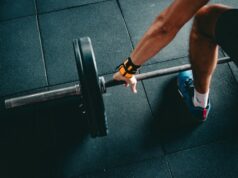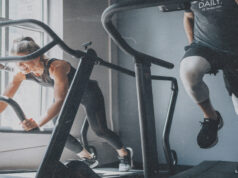Everyone benefits from exercise regardless of their age or gender; elderly people, as well as kids, are not exempted. Exercises or aerobic activities are shown to improve the quality of life and help you live longer. The increase in the awareness of regular exercise is due to its associated benefits shown from studies and researches conducted.
Here are some benefits of regular exercise;
- Reduces the risk of heart diseases by improving blood circulation and reducing blood pressure
- Controls your body weight by burning calories
- Prevents health conditions like diabetes, depression, arthritis, obesity
- Improves your blood cholesterol level
- Enhances your mental wellness
- Promotes good quality sleep
- Boosts your energy level
- Prevents bone loss
- Increases your muscle strength
- Boosts your sex life
- Manages stress
- Delays chronic illnesses associated with aging
According to the Centers for Disease Control and Prevention (CDC), heart disease is the leading cause of death; improving your cardiovascular health reduces the risk. The American Heart Association recommends at least 150-minutes of moderate-intensity aerobic activity each week or 75-minutes of vigorous-intensity aerobic activity each week for adults and elderly who are fit without limiting health condition.
Elderly, senior or older adult is the term used to describe anyone ages 65 years and older. Although, aging process affect the different part of the body like the heart, bones, muscles, joints, eyes, skin, teeth, urinary system and sexuality; regular exercise is important to sustain good health.
Exercise Guidelines For Elderly
Elderly who are fit and have no limiting health conditions are recommended to do one of the followings.
150-minutes (2 hours and 30 minutes) of moderate-intensity aerobic activity each week and muscle-strengthening activities at least 2 days in a week. You can choose to exercise 30 minutes at least 5 days a week.
In aerobic activities or cardio, the rate of your heart and breathing increase. In addition to the increased heart rate, and breathing, ability to speak is not compromised in moderate-intensity activity.
Examples are;
- Walking
- Riding a stationary bike
- Dancing
- Pushing a lawn mower
- Playing doubles tennis
- Climbing the stairs
- Water aerobics
- Gardening
Muscle-strengthening activities maintain strong bones and joints; build up the inner muscles, and keep a healthy weight. These activities are beneficial when you do multiple repetitions or sets to the point that you can’t complete another repetition.
Repetition is a complete movement of activity while a set is a group of repetition. For example, you can do 8 -12 repetitions of a particular exercise in a set.
Examples of muscle-strengthening activities;
- Yoga
- Exercise that involves using your body weight as resistance like push-ups, sit-ups
- Lifting weights like hand weight
- Working with resistance band
- Heavy gardening involving digging or shoveling
- Squatting
75-minutes (1 hour and 15 minutes) of vigorous-intensity aerobic activity each week and muscle-strengthening activities at least 2 days in a week.
Vigorous-intensity aerobic activities are more intense when compared to moderate activities. 1 minute of vigorous-intensity activity is about the same as 2 minutes of moderate-intensity activity.
They increase your heart rate; breathing is hard enough so that you won’t be able to say more than a few words without stopping to catch your breath.
Examples are;
- Jogging
- Running
- Playing soccer
- Swimming fast
- Hiking uphill
- Playing singles tennis
- Energetic dancing
An equivalent combination of moderate- and vigorous-intensity aerobic physical activity and muscle-strengthening activities at least 2 days in a week.
Those who are fit and want greater health benefits can increase their activity to:
300 minutes (5 hours) each week of moderate-intensity aerobic activity and muscle-strengthening activities at least 2 days in a week.
150 minutes (2 hours and 30 minutes) each week of vigorous-intensity aerobic activity and muscle-strengthening activities at least 2 days in a week.
Those with health conditions should understand their condition and how it affects their ability to exercise. Although, they can also be physically active, by performing exercises based on their abilities and conditions. For example, people with back pain can use exercise bikes that are recumbent to support their backs when riding, here’s a review of the best ones available at the moment.
Those with poor mobility should perform exercises to enhance balance and prevent falls on 3 or more days per week. Yoga, tai-chi, and dancing are helpful.
Tips for exercises
- Perform exercises that are right for you and your abilities.
- Start with an aerobic activity that you are comfortable with.
- Aerobic activity should be performed in bouts of at least 10 minutes duration.
- Take breaks between sets of aerobic activity.
- Stretching your body before exercise promotes flexibility.
Conclusion:
House chores and shopping are not regarded as exercise or aerobic activity because they do not raise your heartbeat or increase the rate at which you breathe. Long periods of sitting or sedentary behavior is bad for your health, no matter how much you exercise.
You should also try to break up long periods of sitting with light activity. Introducing exercise in your daily routine will reduce the risk of heart diseases, high blood pressure, stroke, type II diabetes and cancer; promotes better cognitive function and overall quality of life.
Author Bio:
Dr. Charles-Davies is a practicing medical doctor based in Lagos. He runs 25 Doctors, a health information website.











